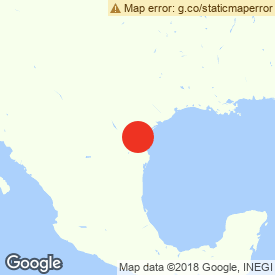[ad_1]
“He’s going back to what’s been tested and what works for him,” one local immigration advocate said.
Alex Brandon / AP
President Donald Trump points to a member of the audience before speaking near a section of the US-Mexico border wall on Jan. 12, 2021, in Alamo, Texas.
MCALLEN, Texas — Besieged by political crises after inciting a deadly insurrection on the US Capitol, President Donald Trump on Tuesday returned to one of the bread and butter issues that helped catapult him into office: the border wall.
Touring the construction near San Juan in South Texas, Trump appeared true to his former campaign self, waving at supporters and hyping the project’s progress as a political victory at a time when his legacy has a huge hit.
“When I took office, we inherited a broken, dysfunctional and open border,” he told an audience during a brief speech. “We reformed our immigration system and achieved the most secure southern border in US history.”
Eric Gay / AP
Supporters of President Donald Trump gather in anticipation of his visit to the US-Mexico border on Jan. 12, 2021.
In 2015, Trump said he’d build the wall on nearly half of the 2,000-mile US–Mexico border. But that number has continued to drop. At his 2020 State of the Union speech, Trump said that by early 2021, “we will have substantially more than 500 miles completed.”
The total currently stands at about 450 miles.
“Unlike those who came before me, I kept my promises,” Trump said Tuesday. “And today we celebrate an extraordinary milestone: the completion of the promised 450 miles of border wall.”
In addition to having to convince Congress to fund the border wall, the project was further complicated in Texas because in order to build the barrier along the border the government would have to seize private land. A costly and drawn out process when landowners chose to fight back.
So far the government has allocated $15 billion for the border wall as of Jan. 4 and of the 452 completed miles only 47 miles of it was in locations where no barriers previously existed.
Despite Trump’s original promise being nowhere near fulfilled, his supporters insisted the president had been vindicated and celebrated his arrival. As his motorcade sped by, Ilsa Zamora jumped up and down, both arms in the air, tears in her eyes. “That’s my president, that’s my president!” the 45-year-old screamed.
But where Trump sees success, critics see the scar tissue of his four years in office — hundreds of immigrant children are still separated from their parents, the asylum system remains largely closed off, and an immigrant community is still coping with being used as a scapegoat to stoke hate during the campaign.
“It’s so insulting for him to come to South Texas in particular,” Efrén Olivares, deputy legal director for Immigrant Justice at the Southern Poverty Law Center, told BuzzFeed News. “It’s a place that was the epicenter of family separations and where we have a refugee camp of immigrants along the Rio Grande just on the other side of the border in Mexico.”
“He’s going back to what’s been tested and what works for him,” Olivares added. “I think that’s why he’s here, and then that’s why he’s going to use every opportunity he can to keep talking about immigrants as criminals.”
Trump should be focusing on the pandemic, which has hit South Texas hard, Olivares said. On Friday, the Rio Grande Valley was re-designated as a “high hospitalization area” by state health officials.
“Instead, he’s coming here to do an alleged victory lap about a prize, a nonsensical project that has wasted millions and millions of dollars,” Olivares said.
Alex Brandon / AP
President Donald Trump reacts after speaking near a section of the border wall, on Jan. 12, 2021, in Alamo, Texas.
Laura Peña, a former attorney for Immigration and Customs Enforcement (ICE), said she believes Trump was encouraged to make the trip as a way to stop him from causing further damage to the GOP after last week’s deadly insurrection.
She grew up in the Rio Grande Valley, and said the area was always a place where you could almost immediately see the impact of immigration policies on the border. When the North American Free Trade Agreement (NAFTA) went into effect in 1994, Peña started seeing kids from other parts of Texas in her classrooms, children whose parents were working in Mexican factories just on the other side of the border.
Trips into Mexican cities like Matamoros were common as people had family and friends living on both sides of the border, Peña said.
“I have memories of going to Matamoros to eat, dance, go to dentists appointments,” Peña said. “Then I have my more recent memories of trying to counsel a family that was recently kidnapped and tortured in the same area where I would celebrate New Years Eve two decades ago or close to the dentist.”
Still, it pales in comparison to what immigrants must overcome, Peña
She now works as an immigrant rights advocate working with asylum-seekers who have been forced to wait in Mexico while their US immigration cases are completed. Along with other attorneys and volunteers, Peña has been trying to help immigrants, some of who live in a squalid encampment on the border living in fear of the cartels kidnapping or extorting them.
She said it’s going to take a long time for the Rio Grande Valley to wash off the stigma of a border area in crisis, where families were ripped apart, and immigrants were tortured in nearby Mexico after being left stranded by Trump’s policies.
“The valley has been used as a pawn for the last four years and this is not who we are,” Peña said. “This was a breeding ground, an inception area, for a lot of this cruelty. There was racism and phobias before Trump, but he definitely stoked a lot of those flames here, just like he did in other parts of the country, and that Trumpism has really taken root here.”
But as the motorcade carried Trump past throngs of fervent, flag-waving supporters, the visit in the waning days of his presidency left different impression for Zamora.
“He started his campaign saying he was going to be the wall right?” she said. “Promises made, promises kept.”
[ad_2]
Source link









